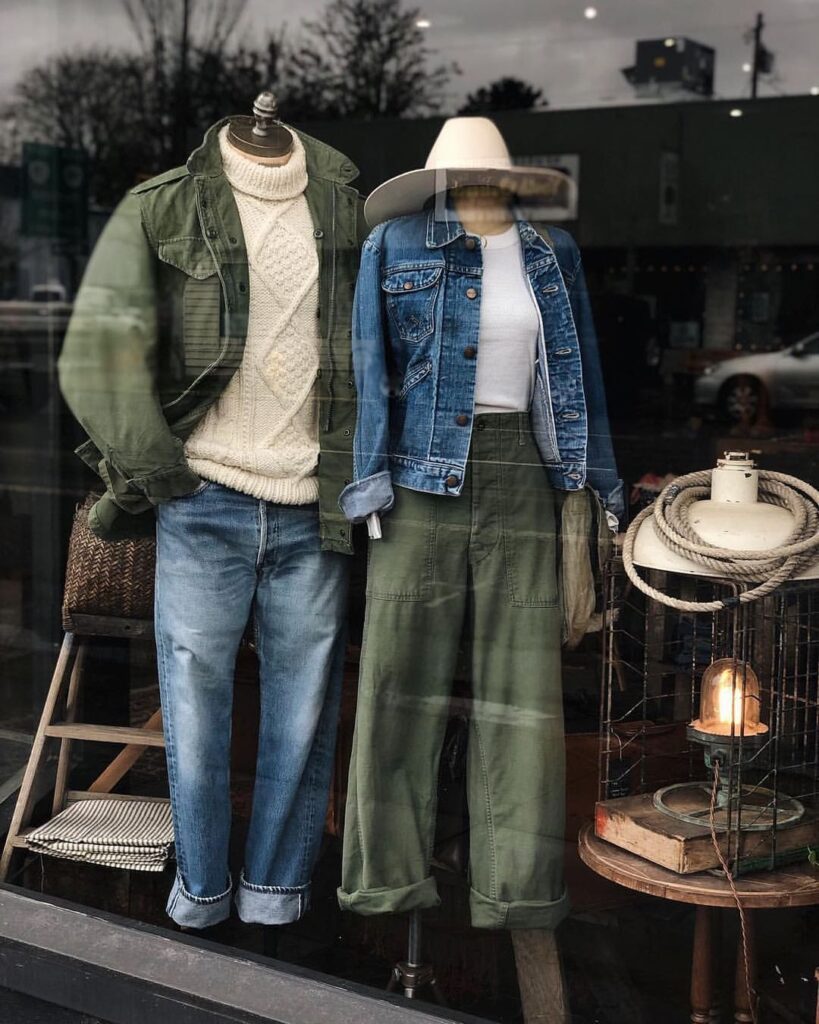
My mother is an inveterate window shopper. She loves taking to department stores and peering into glass display cases, trying on new things even if she has no intention of buying. I’m convinced it’s a habit she picked up when she immigrated from Vietnam to the United States. People window shop all over the world, of course, but the activity is rooted in the West (in Britain, it’s amusingly called mooching). Our family didn’t have much money when I was growing up, so window shopping was often a weekend activity. And oddly, rather than feeling poorer for it, surrounded by expensive goods we couldn’t afford, it was fun to venture into fancier neighborhoods, where we’d peruse boutiques and their neatly arranged displays, then get a bite to eat afterwards.
The development of window shopping is deeply linked to two things. The first is the rise of the European middle class in the 17th and 18th centuries. During the late-Renaissance period, trade with non-Europeans swelled the number of goods at people’s disposal. The Netherlands, Britain, and France had an unprecedented demand for new possessions (and subsequently the furniture that was needed to display those possessions). As material abundance seeped downward, it extended to ordinary matters such as people having more than a single pair of shoes and different clothes for different seasons. The Victorians were similarly prosperous. As England industrialized, an emergent bourgeoisie class was able to afford things beyond the bare necessities and they came to see shopping as a recreational activity.
The other development has to do with technology. Much like how shipping containers facilitated global trade, we wouldn’t have window shopping if it weren’t for actual windows. Prior to the 17th century, glazed shop windows were virtually unknown. Medieval shops were dark and dimly lit, which made them unpleasant to be around. Over time, however, plate-glass manufacturing became less expensive, and so more stores were able to incorporate windows into their architecture. This allowed natural light to pour in, making browsing a pleasurable experience, and importantly, by the turn of the 20th century, it allowed shopkeepers to lure in passersby with extravagant, street-facing displays. (L. Frank Baum, author of The Wonderful Wizard of Oz, popularized the idea of window displays with his 1897 trade paper, “The Show Window.” He also founded the National Association of Window Trimmers of America, bringing new meaning to the famous phrase “pay no attention to that man behind the window curtain!”).

Window shopping, however, didn’t really take off until the post-war period, when the American middle class flocked to large, out-of-town shopping malls that were an evolution of European arcades. These planned commercial complexes, much like their high-street counterparts, mixed goods and activities in varying proportions. Sociologist Roberta Sassatelli wrote about them in her book Consumer Culture: History, Theory, and Politics. “In these spaces, people do not just buy things, they keep up with the world of things, spending time with friends in a polished environment filled with both fantasy and information.” For the indoor flâneur of the 20th century, window shopping is synonymous with hanging out. It’s an activity that allows people to dream with their eyes open, casting their gaze on marvelous objects and enjoying their sensory spectacle.
Like cream sodas and printed maps, however, window shopping today feels quaint. After all, when was the last time you window shopped? Or even know someone who did? Last year, Forrester Research estimated Americans spent $460 billion online, representing a mere 17 percent of total retail sales. However, web-influenced sales – where a customer researches an item before going into a store to buy it – accounted for an additional $1.3 trillion, or nearly 40 percent of all retail business.
It’s hard to imagine this hasn’t affected consumer behavior in some way. Online shopping is a very directed and solitary experience, which means shoppers often go into stores knowing exactly what they want – and they want nothing more. When I talked to George Wang of BRIO a few years ago, he mentioned that one of the challenges of running a luxury boutique is communicating what makes a product special to customers who may not want to be approached. A pair of handwelted Stefano Bemer shoes can be beautiful thing, but a customer won’t know that unless you explain it to them.
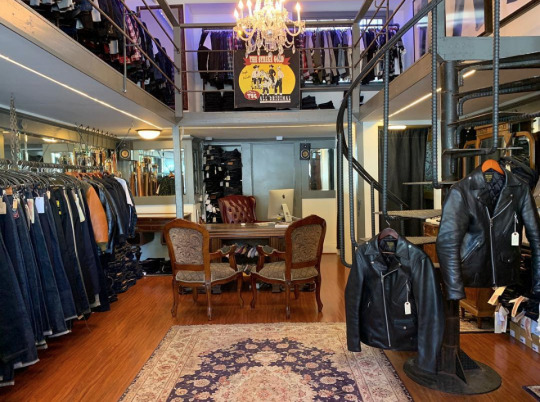
A few years ago, The New York Times had a story suggesting that online shopping has made us more apprehensive to the helicopter sales tactics that used to be a cornerstone of good customer service. Web-savvy customers are irked by the question “can I help you with anything?” and they dislike the traditional swarm-and-greet approach of salespeople. “Sales associates have always been aggressive, but it is our exposure to new types of self-shop retail models that have made us more attuned to their pushiness,” said Mark Pingol, a vice president at consumer behavior research firm Envirosell. “At the department store, the beauty associate is on top of shoppers from the moment they walk into the section. In our studies, women often described them as ‘sharks’ or ‘vultures.’”
Debenhams released an ad campaign earlier this year encouraging people to rediscover the joy of getting lost in a shop, aimlessly wandering and perusing. The idea was to make shopping seem less like a directed activity, with a planned goal in mind, and promote old fashioned time wasting. “Those that love shopping were being made to feel a bit guilty about it; that at worst shopping was becoming trivialized or seen as a solitary occupation,” explains a spokesperson. “One of the greatest phrases we heard from customers was that shopping used to be this great moment in their life, but now it’s become a bit of a relationship with their post room.”
HOW STORES FEEL ABOUT WINDOW SHOPPERS
Even if online shopping has changed consumer behavior, it hasn’t changed how stores feel about window shoppers. In calling around, I found every store owner I spoke to welcomed the idea of window shoppers – some have even built a business around it. Self Edge, for example, purposefully sets up stores in high-traffic areas with the intention of bringing in people who may just be looking. “We keep opening physical retail stores because we feel it’s still important to see these types of things in person,” says Kiya Babzani, who started Self Edge 12 years ago with his wife, Demitra. “The entire reason you’ve created the physical retail location is so it can be a place for people come and talk about the product, whether they plan on buying or not.”
“We’re a high price point store, so I know people may not always be ready to buy,” says Todd Barket, co-founder of Unionmade. “Maybe they’ll come back later, or come back when we’re having a sale. I’m just happy when people come in.”
Many stores are also set up to encourage people to linger. At The Armoury in Hong Kong, the shop feels like a friend’s living room or a cozy library study. The store has dark wood paneling and plush leather chairs with fluffy cushions inviting you to sit down. “I designed The Armoury with interaction in mind, as I want it to be a comfortable place for people,” says Mark Cho. “Browsing is no problem, we are always happy to answer questions and have conversations. We don’t expect someone will buy something as soon as they walk in and we know it takes time to build a relationship with a customer.”
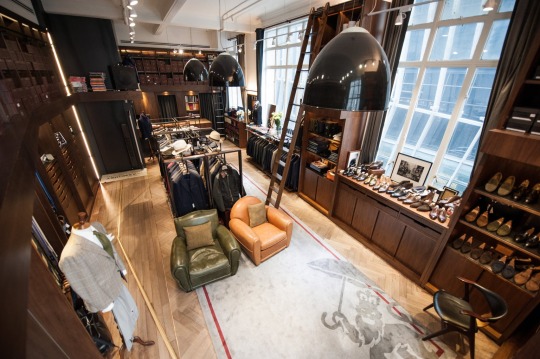
Even for pragmatic shoppers, window shopping has some real gains. “My favorite experiences when shopping are when a salesperson pushes me outside my comfort zone but into something that I ended up really liking,” says Mark. “Sometimes, I make the mistake of blinkering myself when I come in with hard preconceived notions. I end up missing out on something good because it wasn’t fitting my vision for something.”
This is the real advantage of window shopping: you get to train your eye, hopefully with the help of an experienced sales associate. By trying on things you may have never considered online, and getting to see and feel things in-person, your style can develop in unexpected ways. “I believe that a physical store is still the best way to experience a product and brand,” says Wooden Sleepers co-founder Brian Davis. “Online may be more convenient, but it is not engaging. At a small shop like Wooden Sleepers, you are going to meet someone who is passionate and knowledgeable about the product, who can offer their point of view, and help you out if that’s what you need.”
It still takes a bit of coaxing, however, to get the shy customer to come in. Martin Shanker, who trains employees at luxury boutiques, says customers are incredibly distant these days. “A customer walks into a store and they need time to adjust their eyes. They want to feel the lay of the land even if they know what they want. So if you go up to them before they’re ready and say, ‘Can I help you?,’ which is a greeting cliché, you’ll hear, ‘No, thank you.’ That’s a silent derailer because, as subtle as that is, the salesperson unintentionally pushed the customer to say no. You don’t ever ask or pose any question that would get you a no.”
Sid Mashburn says he tries to solve this by giving people a quicker out. “When someone walks through that door, we consider it a visit to our house. We’re big on not opening with ‘Can we help you today?’ It’s more ‘Hey, can we get a cold drink? Make yourself at home.’ And then we leave them fairly quickly so they’re not caught in the lurch of having to say they’re just looking. We don’t even want them to feel like they need to say that. But your EQ also has to be up so you know when someone is in a hurry and needs help.”
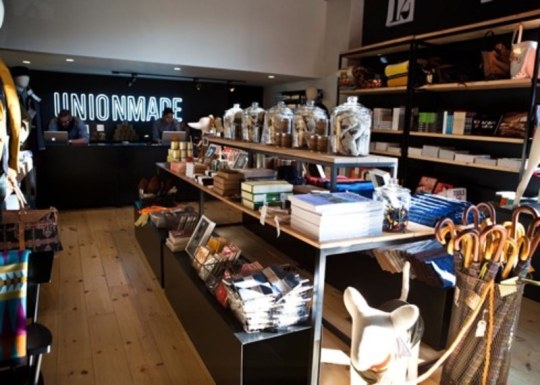
WINDOW SHOPPING ETIQUETTE
The challenge to window shopping today isn’t about how stores are set up, but rather our self-imposed guilt about pursuing things without any intention (sometimes even ability) of buying. When I asked shop owners what customers could do to be more courteous – even if only to assuage themselves of their own fears – every single one said “nothing.” Some were even surprised by the question (“they’re just clothes!,” said Kiya). But as someone who knows how expensive items can feel precious, and maybe bring up insecurities, I plied the following from a few people. These aren’t hard rules – again, every shop owner said they were happy to have people browse – but if it makes you feel any better, here’s how to be a more considerate window shopper:
Engage with the Sales Staff
Many stores say it’s nice when a customer just says hello. “I know people like to slip in-and-out of places, but it’s nice when someone acknowledges the sales staff,” says Todd Barket. “We’re really low pressure and welcome conversation, but if someone wants to just browse, that’s great too. It’s just nice when they say hi.”
“I think of it as an exchange of manners,” says Sid Mashburn. “Just as I train my staff to be open, affable, and accessible, it’s nice when a customer reciprocates. If I walk into a store and feel an openness from the sales staff, I like to introduce myself. ‘Hi, I’m Sid Mashburn and I’m just dropping by to see what you have!’ If they ask ‘Can I help you with something,’ I like responding with ‘No, I’m just going to poke around.’ That’s one of my favorite phrases – ‘poke around’ – cause it’s a flexible way of saying ‘I’m good for now, but I’ll holler if I need your help.”
Don’t be Afraid of Handling Things, but be Thoughtful
The whole point of window shopping is being able to see things in person, so don’t be afraid of trying on clothes. “The body of a cloth doesn’t come through photographs, so touching and feeling is very important,” says Mark Cho. “Fit is also important, and you don’t truly know how something looks until you’ve tried it on.”
At the same time, be considerate. Maybe don’t flip through an entire stack of sweaters if you can ask the sales staff for help finding your size (they have to clean up your mess later anyway, so you may as well save them some trouble). The Armoury, a specialized boutique for high-end tailored clothing, will have more polished goods, figuratively and literally, that can benefit from special attention.
“When picking up shoes from a display shelf, pick them up in the middle, near the lacing, not at the toe,” suggests Mark. “Many shoes come from the manufacturer gently polished with a bit extra work done at the toe. Staff will also regularly add some wax to it, but the finish gets marred when too many people pick it up. Similarly, if the shop allows you to try on a necktie, undo it properly (i.e. do all the steps in reverse). Don’t just yank the front blade out the knot, that’s really bad for the tie.”
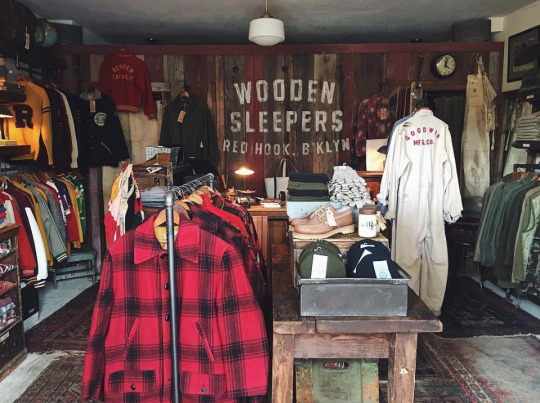
On Some Occasions, Call Ahead
Many guys like flying under the radar when shopping, but if you want special attention – particularly if you’re coming in from out of town or stopping by on a busy day – consider calling in advance. Says Sid: “It can be as simple as ‘Hey I’m Sid Mashburn, I’m coming in from Birmingham, I’ll be there on Thursday, is there anyone I should ask for?’ This is just if you need special attention that day.”
Absolutely Don’t Showroom
Store owners had loose requirements for what they think customers can do to be more courteous, but they were unanimous in what they think customers shouldn’t do: showrooming. Says Brian Davis: “The term is actually in the dictionary now – it’s the ‘practice of visiting a store in order to examine a product before buying it online at a lower price.’ If you do this at Best Buy or Costco to compare prices on a washing machine, more power to you. But don’t go to a small independent shop, try on a bunch of stuff, then buy online to save a few bucks. Support your neighborhood small shops. Every sale matters. Don’t showroom small shops!”
My own tip: if you’re just starting to build a better wardrobe, walking into a fancy boutique or tailoring shop can feel intimidating. It can, admittedly, bring up all sorts of insecurities – a feeling like you don’t belong or shouldn’t touch such expensive goods. Comedy writer Monica Heisey has an amusing, tongue-in-cheek op-ed in The New York Times this week about what to do if you’ve accidentally wandered into a too-expensive store. “The first thing is not to panic. It’s an understandable error: Rich-people stuff looks a lot like regular stuff these days; it just feels infinitely better to the touch and doesn’t break right away. […] Walk around, touching things with an insouciant air, such as one might have if she could confidently define the word ‘insouciant.’ Do not look at price tags; you are not the kind of person who cares if a skirt is — $600?!?!?”
For all the glitz and glamour of the fashion industry, and the rarified air in tailoring shops, take comfort in knowing people in this trade are incredibly normal and share your enthusiasm for style. Some common courtesy goes a long way, and everyone likes to hear a hello, but don’t be afraid to window shop and maybe even have a conversation. Window shopping is endlessly inspiring and strangely relaxing – and best of all, it’s free.
(photos via Sid Mashburn, Self Edge, The Armoury, Unionmade, and Wooden Sleepers)
